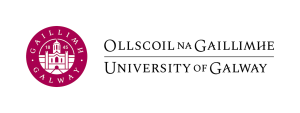A EuroHPC Success Story: Dr John Regan

John Regan is a SFI-Royal Society University Research Fellow at Maynooth University. He is also the holder of an IRC Laureate award. Dr Regan is an expert in modelling the formation, growth and evolution of black holes in the Universe. In particular his work focuses on understanding how massive black holes form in the early Universe and what physical mechanisms drive early black hole formation. Dr Regan received his PhD at the University of Cambridge and has held postdoctoral fellowships at the University of Helsinki and Durham University.
Dr Regan has also been successful with two proposals to EuroHPC. His first was in 2022 and his most recent proposal in 2024. Both proposals have involved large scale numerical modelling of black hole formation. For the purpose of this interview we will focus on Dr Regan’s most recent proposal.
What is the context and what are the goals of your project?
We are looking at cosmological simulations. In a nutshell we are trying to understand early black hole and galaxy foundations in the first billion years of the Universe.
There has been a lot of activity in the field recently due to the James Webb Space Telescope. It is discovering lots of new galaxies and black holes from very early times in the Universe. There is a bit of a gap in the field as we don’t have computational models or simulations to match what the James Webb Space Telescope is seeing, so that’s the goal of the simulations we are running.
What is the call type and running date for your proposal?
I applied in November 2023 and my hours were awarded in February 2024 and they will run until February 2025.
What are the details of your resources node hours?
We have been awarded 180,000 CPU hours.
Which EuroHPC platform(s) have you gained access to?
The Karolina CPU machine which is in Czechia.
What was your motivation for applying to EuroHPC?
I applied to EuroHPC for several reasons. Firstly, we need to run extensive simulations, and EuroHPC provides the necessary infrastructure to handle these tasks efficiently. Secondly, our group consists of several members who require access to a substantial number of node hours. EuroHPC offers this capacity, ensuring that we can meet our computational needs. Lastly, EuroHPC guarantees access to these resources for up to a year, providing us with the reliability and continuity essential for our long-term projects.
What was your experience of the application process?
The application process for EuroHPC was relatively straightforward. It involved completing a 6-to-8-page application form that required providing scientific justification, scaling plots and project figures. Overall, the application process was very manageable. The entire process took about five to six months. It took me around a month to complete my application, as I needed to run scaling tests.
After submission, it took approximately four months to receive word on my successful outcome. I would advise those planning to apply to EuroHPC to be mindful of these timeframes.
Your overall satisfaction levels with the EuroHPC service?
Overall, I am very happy with the EuroHPC service. Both of my EuroHPC projects have been run on the Karolina system, which I found easy to use. Queue times are short, and I am overall satisfied with the service.
Did ICHEC support you adequately and if so how?
Yes, ICHEC supported me during my first application, but I didn’t need their help this time around. It was valuable to get input from ICHEC for my initial application. There is also a EuroHPC application template, which was a great help when I was applying for the first time.
Would you have any advice for any Irish researchers who may be considering following your example?
I would say go for it! The first application might take some time but, once you're familiar with the process it becomes much easier. There is plenty of support available through the EuroHPC website and ICHEC can provide feedback on your application.




